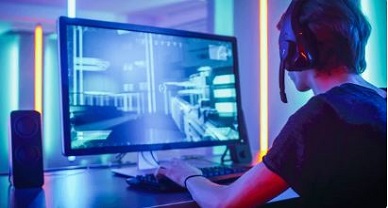Competitive Gaming Achilles Heel: E-Doping In E-Sports
INTRODUCTION:
We’re living in an era of evolving world of E-sports, where sports no more is limited to fields but also embracing its boundaries to inculcate Sports from Electronic media. As the industry of E-sports gains more prominence and recognition, there arises a crucial need to maintain fair competition and preservation of integrity. Provided the fact, that E-sports is gaining recognition globally couples with its inherently multidisciplinary nature of E-sports, the dynamism necessitates a harmonized legal framework in order to preserving the integrity of E-gaming. As the industry moves towards addressing issues surrounding performance-enhancing practices, legal adjustments and collaboration among all involved parties which is vital to guarantee fair competition and safeguard the future of this rapidly burgeoning Industry.
Uncovering E-Doping
In contrast to Doping, E-doping is a doping in order to enhance the performance electronically. It’s a type of doping wherein the user is involved in manipulation or fixing of either software or hardware for the sake of beneficial result or to gain an unfair advantage within a particular game. It further encompasses use of various performance-enhancing substances akin to those in traditional doping. It merely involves all the illicit or unethical practices subject to any jurisdiction.
With the escalating popularity and institutionalization of E-sports, a compelling need for maintaining fair and healthy competition and upholding the integrity emerges. Within the dynamic realm of E-sports, a prominent issue is the use of cheat software, or hardware’s, popularly known as “mechanical doping”. This form of cheating rendering players with an unfair advantage in their E-sports, specifically in FPS(First-Person Shooter)games. Some of the common cheat software includes, Wallhacks, aimbots, and BHOP scripts. On the other hand, hardware cheats are less frequent nowadays. Unlike traditional doping in physical sports, mechanical doping simplifying gameplay rather than enhancing a player’s physical abilities.
In conventional E-sports doping, players tend to ingest psychostimulant substances such as Adderall, which is generally used to treat ADHD patients, along with other drugs like Modafinil, Propranol, & Donepezil. Conversely, E-doping involves the modifications and alterations of hardware and software in order to gain an unfair advantage. E-doping enables players to potentially boost their cumulative output, speed, and precision and conversely, substances such as Adderall can enhance a player’s composure and aggressiveness[1]. The disquieting reality that poses a significant challenges in the realm of E-sports is that the mechanical doping can enable a niche player to outperform someone with extensive experience in a game. Whereas traditional doping in physical sports necessitates skill and practice to leverage the advantage, whereas mechanical doping does not require so resulting it as a more pressing concern.
Levelling the Playing Field
On one hand, E-sports is hailed as a ‘gamechanger’ revolutionizing the entertainment industry while simultaneously providing opportunities for aspiring gamers to make their mark. The two terms ‘gaming’ and ‘E-sports’ might be used interchangeably but they are two distinct arenas. Gaming refers to the playing of video games at a non-professional level, merely for entertainment purposes. To reach the pinnacle of their performance, the players dedicate hours of training efforst and hours in preparing.[2] E-Sports or Electronic Sports is a different kind of competitive gaming though video games and often takes the form of and can range from popular team-oriented Multiplayer Online Battle Arenas (MOBAs) to single player- First person Shooting (FPS), to survival battle royales (like the popular arena game BGMI), to virtual reconstructions of physical sports. E-sports have been gaining significant recognition and popularity, serving as a catalyst for growth in the gaming sector, talent development and even economic opportunities.[3] The E-sports market is experiencing an unprecedented growth rate than ever due to the fervent interest of the large population in the same. Yet, with the rapid expansion come its own set of pros and cons. One notable challenge associated with it is that it needs regulation as there is no such legislation or code which deals with the E-Doping in E-sporting. Another reason that can be cited for the growth rate of this sector is because of the prize money paid out, player salary structures. E-Sports events have millions of viewers and attract substantial corporate sponsorships, further boosting their popularity. This basically emerges from the fact that greater the opportunity for monetary gain, greater the incentives to cheat. The year 2020 witnessed a paradigm shift owing to COVID-19 which led to an exponential surge in E-sports and live streaming of gameplay by talented individuals, further enhancing their influence in the world of competition.

On the flip side, there exists a faction of individuals within the realm of E-sports domain colloquially termed as “rulebreakers”. These individuals employ unethical or illicit practices posing ethical and legal challenges. Further, the impact of E-sports extends beyond the virtual arena, significantly affecting gamers who have encountered myriad of physical and mental health problems. In addition to this, E-sports tea, players find themselves under formidable pressure from their sponsors, compelling them to partake in training regimes and showcase their exceptional skills in such competitions. The relentless nature of this training often takes a toll on their physical well-being, concomitantly giving rise to discomfort, mental fatigue and exhaustion. Unfortunately, the demanding environment fosters the temptation for players to resort to doping seeking an extra-edge for enhanced performance.
Traversing Indian Laws:
The National Anti-Doping Act came into effect on August 2022 was drafted with an encompassing goal of establishing various pivotal organisations such as the ), the National Dope Testing Laboratories(NDTL), National Anti-Doping Agency(NADA) and other dope test laboratories. Prior to the enactment of this Act, anti-doping practices were kept in check and regulated by the National Anti-Doping Agency in India. This agency was constituted on 24 November 2005 to implement anti-doping rules in accordance with the guidelines delineated by the WADA. It currently operates under the aegis of the Ministry of Youth Affairs and Sports. Further, the Act aimed at creating the National Board for Anti-Doping in sports, which primarily focused at regulating anti-doping practices within the traditional sporting arena not affected by a pinch of E-sports.
The National Anti-Doping Act of 2022 was enacted with the sole purpose of establishing the National Anti-Doping Agency (NADA). NADA was entrusted with the role of supervising anti-doping endeavors in the world of sports and aligning its activities with the UNESCO International Convention against doping in Sport. India ratified this convention on 7th November, 2007, an internationally acclaimed agreement that came into force on February 1st, 2007. This convention plays a significant role in standardizing anti-doping regulations and guidelines to create a healthy and fair playing fields for players. However, it also lacks provisions for E-sports despite its burgeoning popularity.
The notification dated December 23, 2022 marked first step by recognizing E-sports as a distinct category. Nevertheless, a more extensive regulatory frameworks is essential to govern this emerging industry effectively. Looking into more technological advancements, we should consider the fact that Metaverse has finally arrived with its serious implications on legal filed and the fact E-sports is growing will have probable nexus in the near future. Effectively addressing the multidisciplinary nature of the E-sports industry, along with tackling the pressing issues of E-doping is the need of the hour.
Game Changers or Rule Breakers:
Given that the 20th century is not only playing Olympics and games on field rather behind from those pixels as well. As E-sports gain recognition, there is an emerging need to adapt these laws to include E-sports, especially regarding the use of performance-enhancing substances. E-sports are now gaining legitimacy in the eyes of governing sports authority but lacks regulation and controls on it in India. In India, the realm of sports falls squarely within the purview of the individual states, as it is categorized under the the State List, of the Constitution of India. On the 23rd of December 2022, a significant development took place when the Government of India officially accorded recognition to online gaming and E-Sports as part of the multisport event domain. These domains are now entrusted to the watchful eyes of two key ministries: the Ministry of Electronics & Information Technology (MeitY) and the Ministry of Youth Affairs and Sports. However, it’s worth noting that, despite this recognition, a robust and all-encompassing legal framework is yet to be firmly established in this domain.
The evolution of such legislation is expected to be a gradual process, considering the ever-expansive and borderless nature of E-Sports. Categorizing it within Schedule-VII of the Constitution poses a significant challenge, given the unique characteristics and dynamics of E-Sports. This challenge reflects the need for careful deliberation and a nuanced approach to crafting laws that can effectively govern and regulate this swiftly growing and evolving domain.[4]
The International Olympics Committee (IOC) has recently embraced E-Sports, organizing events like the Olympic Virtual Series and planning the first Olympic E-Sports Week in 2023 in Singapore. Other major sporting events, including the Commonwealth Games and Asian Games, have also featured E-Sports, highlighting their growing recognition. The South Korean Government played a pioneering role in E-Sports by establishing the Korean E-sport Association (KeSPA), the first organization dedicated to video gaming and E-Sports regulation. Games like Starcraft, Starcraft II, and DOTA quickly gained immense popularity and attracted a substantial fanbase along with substantial prize pools.
Conclusion
Within the regime of E-sports, it is pertinent to tackle the issue of E-doping from a legal perspective which stands as an ever-evolving challenge that necessitates concerted efforts involving a multitude of stakeholders from various sectors such as E-sports organizations, game developers, law enforcement agencies, and various Government bodies. Merely curating a conventional legislation or statues would not suffice and would prove to be inadequate in the context of our contemporary world. Instead, such legal efforts must be accompanied and complemented by the development and implementation of advanced anti-cheat software. This technological advancement will play a pivotal role in maintaining a level playing field and preserving the fairness of competitive E-gaming.
Provided the potential for E-sports in India seems vast and promising, signifying an exciting new dimension in the world of gaming. It becomes a collective responsibility for all stakeholders to ensure its ethical growth, establish its legitimacy and foster fair play in this burgeoning era of E-sports.
Author: Shreya Gupta, in case of any queries please contact/write back to us at support@ipandlegalfilings.com or IP & Legal Filing.
[1] https://www.esportstalk.com/blog/the-difference-between-cheating-in-esports-vs-traditional-sports/
[2] https://medium.com/ipg-media-lab/the-difference-between-esports-gaming-3bcb2d45d42b
[3]https://www.livelaw.in/law-firms/law-firm-articles-/united-nations-educational-scientific-and-cultural-organisation-ministry-of-electronics-information-technology-multiplayer-online-battle-arenas-international-olympics-committee-korean-esport-association-starcraft-e-sports-fede
[4] https://www.lawinsport.com/topics/item/the-growth-of-esports-in-india-a-short-review-of-the-main-legal-and-regulatory-challenges
